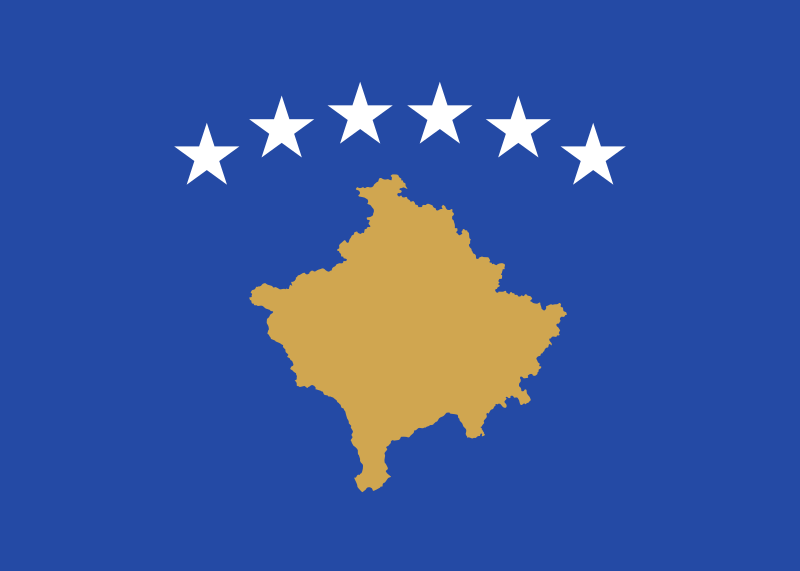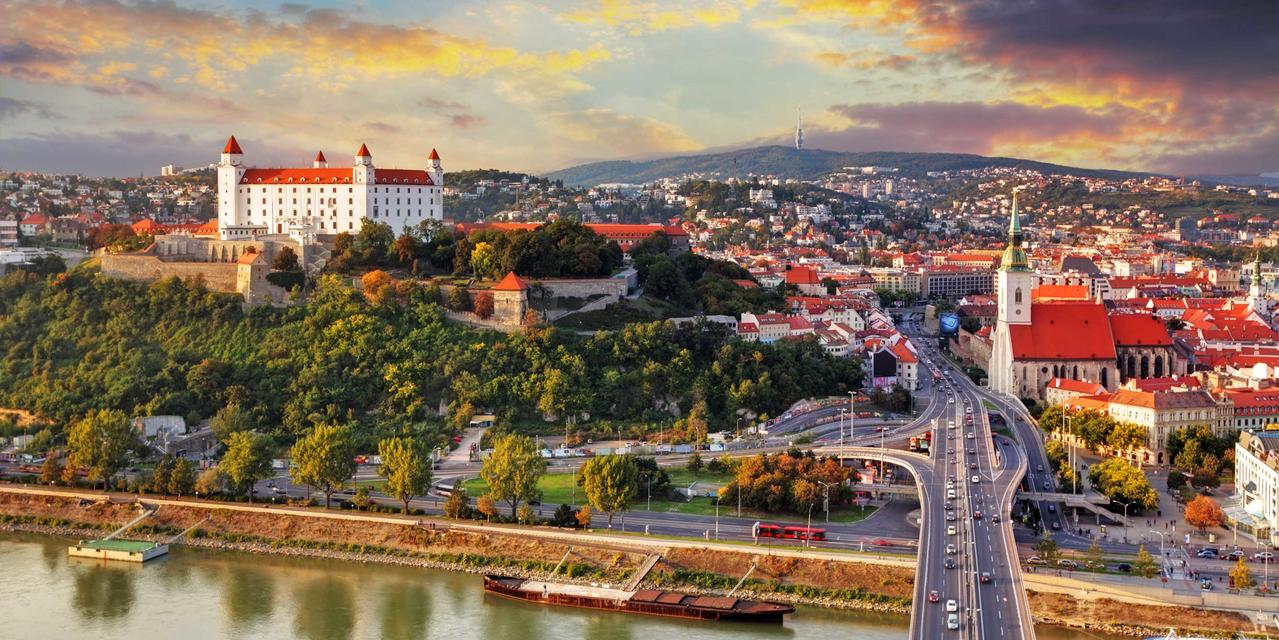General Information
Population
5.458.827 (World Bank 2020)
5.431.306 (STAT SK 2022)
Immigration
7.016 (Eurostat 2019)
17.507 (STAT SK 2021)
Emigration
419.651 (UN Emigration Stock 2020)
2428 (STAT SK 2020)
Working-age population
3.698.210 (World Bank 2020)
1.828.200 (STAT SK 2021)
Unemployment rate
6.8% (World Bank 2020)
6.3% (STAT SK 2022)
GDP
104.574 bn current prices USD (World Bank 2019)
114.870 bn, current prices USD (STAT SK 2021)
Refugees and IDPs
Territory
49.035 km² (CIA World Factbook)
Migration Authorities
Responsible Body
Line Ministries
Agencies
Description
The Republic of Slovakia used to be one of the countries of emigration but started attracting more foreigners since joining the EU and the Schengen area. In 2022, the population of the country amounted to 5.431.306 persons. Since 2011, the population has been slowly growing, but has started to decline since the pandemic. Over the past 5 years, the migration balance has been slightly positive.
In the period from 2004 until 2021, the number of foreigners legally residing in Slovakia increased eightfold, from 22.108 to 167.519. Of this number, one-third were EU nationals, primarily from the Czech Republic (12.562), Hungary, Poland, and the remaining 111.427 were non-EU nationals. The largest non-EU foreign communities come from Ukraine (56.480), Serbia (16.331) and Vietnam (7.235).
The most common reasons for immigration to the Slovak Republic are employment, business, study or family reunification. In 2020, immigrants heading to Slovakia for work represented almost 35% of the total number of immigrants, followed by entrepreneurs with 23% and those coming for family reunification with 13%. In 2021, the share stood at 26%, 36% and 12% respectively. The year 2018 represented a turning point with the number of migrants from third-countries exceeding the number of migrants arriving from the EU. Among the EU countries, the highest number of workers is from Romania (7392) and the Czech Republic (5917). From non-EU countries, most come from Ukraine (19 578), Serbia (10 174) and Vietnam (1 023).
Migration in search of international protection to Slovakia is less widespread. The highest number of 732 applications was recorded in 2012, but the figures have been decreasing since then. In 2021, for example, Slovakia registered 370 applications for international protection, and granted protection to 40 persons. In 2022, Slovakia featured among the first line countries receiving people fleeing the war in Ukraine. Ukrainian nationals can apply for temporary protection for one year based on the amendment to the Asylum Act. By mid-July, almost 86.000 people received temporary protection in Slovakia.
Slovakia is equally not very attractive as a destination for irregular migrants. Overall, irregular migration in Slovakia has been on a decline. While the number of irregular migrants stood at around 10.000 per year in 2004, when Slovakia joined the EU, it has not exceeded 2.000 persons in recent years. In 2021, Slovakia apprehended 1.769 irregular immigrants, most of whom were from Afghanistan (470), Morocco (285) and Ukraine (208). Slovakia remains only a transit country for the majority of irregular migrants. Irregular migrants enter Slovakia either from it 97km-long border with Ukraine or via the Balkan route and through Hungary. As far as readmission agreements, in 2021, Slovakia returned 41 nationals of Pakistan, 30 nationals of Afghanistan and nationals of Bangladesh, with most returned to the territory of Ukraine and Hungary.
For the past decade, emigration from Slovakia for permanent residence was on average 3.500 persons yearly. Emigration of Slovaks has been mainly economic and associated with the relatively high unemployment rate, reaching up to 10% in 2021 in some Slovakian regions, and low wages. For example, up to 350.000 Slovaks worked abroad in 2019. The outflow of labour force from Slovakia slowed down before the COVID-19 pandemic due to the economic growth and foreign investments that allowed creating new jobs in the country. However, since many Slovaks do not report a change of residence within the single market, the number of Slovak workers abroad can be underestimated. The Czech Republic, Hungary and Austria since long featured among the most popular destinations for Slovak labour migrants. The UK also used to attract Slovak migrants, but the situation has changed with Brexit and the falling rate of the British pound.
The approval of the Migration Policy of the Slovak Republic: Perspective until the Year 2025 on 8 September 2021 represents a key change in terms of migration policy in Slovakia. In this new policy document, the country emphasises integration efforts given the ever-increasing number of immigrants and encourages better understanding between Slovaks and foreigners. Following the example of other EU Member States, Slovakia wants to encourage legal labour migration and provide migrants with suitable working conditions to ensure sustainable economic growth in Slovakia.
Slovakia's migration and asylum policy are influenced by EU Community acts. The country often aligns its position to those of other V4 partners, demanding stricter measures to prevent migration to Europe and condemning the 'sponsorship of relocation' principle. In terms of priority areas, Slovakia focuses on the fight against irregular migration, which it perceives as a lack of legal migration, including labour migration routes.
Slovakia is a party to several migration dialogues, including the Prague Process. Like other V4 countries, in 2018 voted against Global Compact for Migration, which significantly shook the domestic political scene. In recent years, Slovakia has been focusing more on legal labour migration. In particular, in 2018 it adopted the Strategy of Labour Mobility of Foreigners in the Slovak Republic to attract foreign workers to specific labour sectors. In terms of integration of foreigners, since 2019 Slovakia is preparing an amendment to the Integration Policy of the Slovak Republic from 2014.
- Population: 2 845 955
- Emigration: 43 853
- Immigration: 20 753

- Population: 2 961 900
- Emigration: 31 200
- Immigration: 15 800

- Population: 8 978 929
- Emigration: 101 714
- Immigration: 154 202

- Population: 10 119 100
- Emigration: 1 654
- Immigration: 2 042

- Population: 9 349 645
- Emigration: 20 976
- Immigration: 34 846

- Population: 11 521 238
- Emigration: 102 413
- Immigration: 41 756

- Population: 3 475 000
- Emigration: 1 671 177
- Immigration: 37 100

- Population: 6 838 937
- Emigration: 26 755
- Immigration: 39 461

- Population: 4 047 680
- Emigration: 34 046
- Immigration: 33 414

- Population: 918 000
- Emigration: 17 373
- Immigration: 26 170

- Population: 10 519 913
- Emigration: 19 232
- Immigration: 69 201

- Population: 5 873 420
- Emigration: 50 171
- Immigration: 76 552

- Population: 1 331 796
- Emigration: 12 481
- Immigration: 19 524

- Population: 5 550 066
- Emigration: 13 459
- Immigration: 36 364

- Population: 67 813 396
- Emigration: 29 000
- Immigration: 169 000

- Population: 3 728 600
- Emigration: 74 264
- Immigration: 89 996

- Population: 83 200 000
- Emigration: 966 451
- Immigration: 1 186 702

- Population: 10 432 481
- Emigration: 77 837
- Immigration: 84 221

- Population: 9 689 010
- Emigration: 21 730
- Immigration: 49 069

- Population: 5 011 000
- Emigration: 54 000
- Immigration: 65 200

- Population: 58 983 122
- Emigration: 159 884
- Immigration: 247 526

- Population: 18 984 845
- Emigration: 29 110
- Immigration: 11 447

- Population: 1 798 188
- Emigration: 8 724
- Immigration: 11 543

- Population: 6 636 800
- Emigration: 961
- Immigration: 5 822

- Population: 1 875 757
- Emigration: 12 975
- Immigration: 12 689

- Population: 39 315
- Emigration: 432
- Immigration: 713

- Population: 2 805 998
- Emigration: 25 205
- Immigration: 44 858

- Population: 645 397
- Emigration: 15 959
- Immigration: 25 335

- Population: 519 562
- Emigration: 12 679
- Immigration: 13 885

- Population: 3 542 708
- Emigration: 2 243
- Immigration: 4 223

- Population: 619 211
- Emigration: 6 631
- Immigration: 6 008

- Population: 17 600 000
- Emigration: 142 517
- Immigration: 250 792

- Population: 2 097 319
- Emigration: 1 082
- Immigration: 1 848

- Population: 5 435 536
- Emigration: 34 297
- Immigration: 53 947

- Population: 38 914 000
- Emigration: 8 780
- Immigration: 13 263

- Population: 10 344 802
- Emigration: 68 209
- Immigration: 111 311

- Population: 19 186 201
- Emigration: 192 631
- Immigration: 163 806

- Population: 146 171 015
- Emigration: 487 672
- Immigration: 594 146

- Population: 6 871 547
- Emigration: 26 858
- Immigration: 11 306

- Population: 5 431 306
- Emigration: 2 428
- Immigration: 17 507

- Population: 2 107 180
- Emigration: 17 745
- Immigration: 36 110

- Population: 47 385 107
- Emigration: 381 724
- Immigration: 530 401

- Population: 10 475 204
- Emigration: 48 284
- Immigration: 90 631

- Population: 8 736 500
- Emigration: 114 600
- Immigration: 165 600

- Population: 9 506 300
- Emigration: 54 495
- Immigration: 40 859

- Population: 84 680 273
- Emigration: 330 289
- Immigration: 677 042

- Population: 6 200 000

- Population: 41 418 717
- Emigration: 19 121
- Immigration: 26 361

- Population: 67 081 000
- Emigration: 334 000
- Immigration: 573 000

- Population: 35 079 200
- Emigration: 13 648
- Immigration: 1 105


